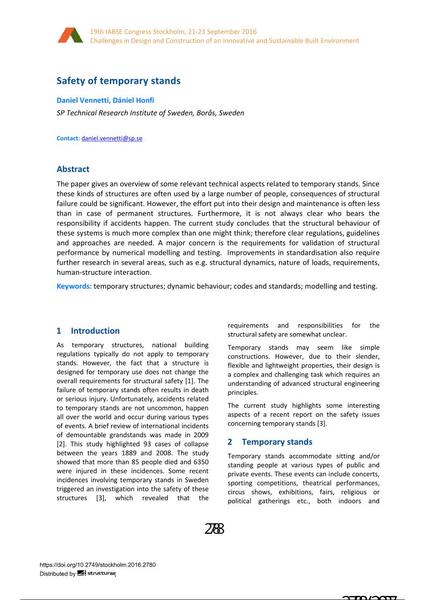Safety of temporary stands

|
|
|||||||||||
Bibliografische Angaben
| Autor(en): |
Daniel Vennetti
(SP Technical Research Institute of Sweden, Borås, Sweden)
Dániel Honfi |
||||
|---|---|---|---|---|---|
| Medium: | Tagungsbeitrag | ||||
| Sprache(n): | Englisch | ||||
| Tagung: | IABSE Congress: Challenges in Design and Construction of an Innovative and Sustainable Built Environment, Stockholm, Sweden, 21-23 September 2016 | ||||
| Veröffentlicht in: | IABSE Congress Stockholm, 2016 | ||||
|
|||||
| Seite(n): | 2788-2795 | ||||
| Anzahl der Seiten (im PDF): | 8 | ||||
| Jahr: | 2016 | ||||
| DOI: | 10.2749/stockholm.2016.2780 | ||||
| Abstrakt: |
The paper gives an overview of some relevant technical aspects related to temporary stands. Since these kinds of structures are often used by a large number of people, consequences of structural failure could be significant. However, the effort put into their design and maintenance is often less than in case of permanent structures. Furthermore, it is not always clear who bears the responsibility if accidents happen. The current study concludes that the structural behaviour of these systems is much more complex than one might think; therefore clear regulations, guidelines and approaches are needed. A major concern is the requirements for validation of structural performance by numerical modelling and testing. Improvements in standardisation also require further research in several areas, such as e.g. structural dynamics, nature of loads, requirements, human-structure interaction. |
||||
| Stichwörter: |
dynamisches Verhalten
|
||||
